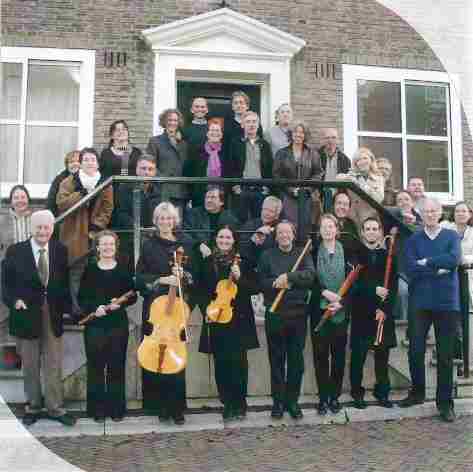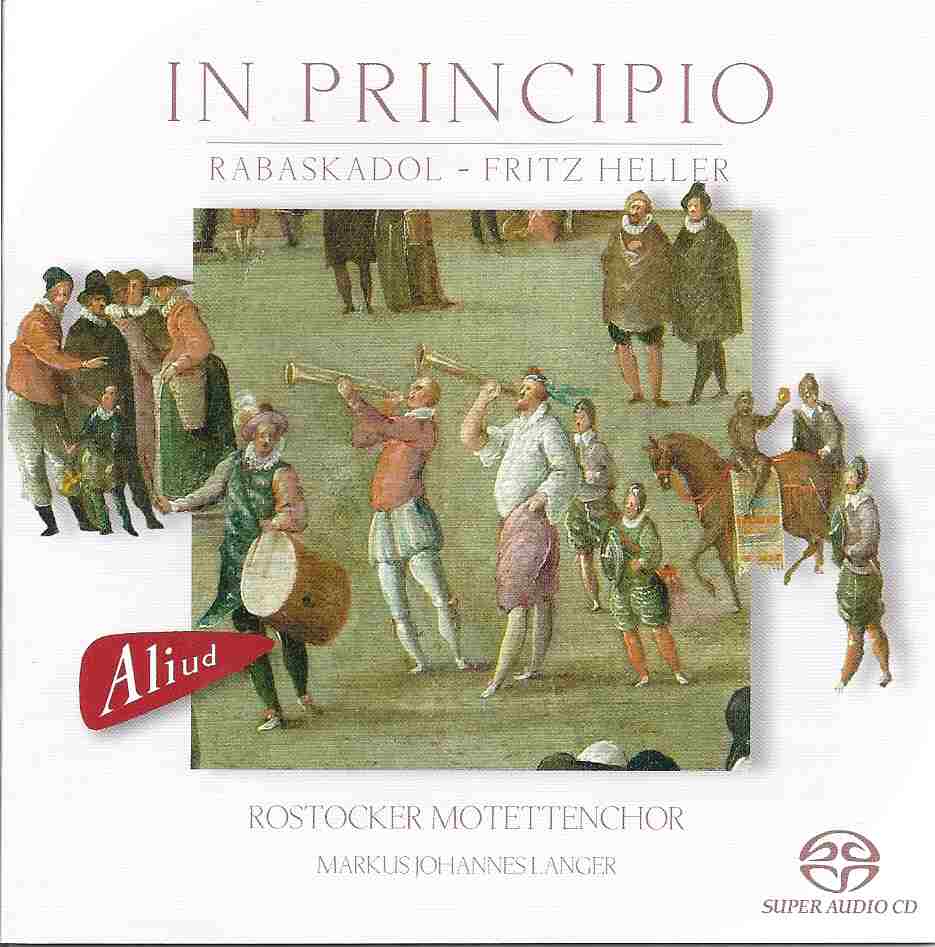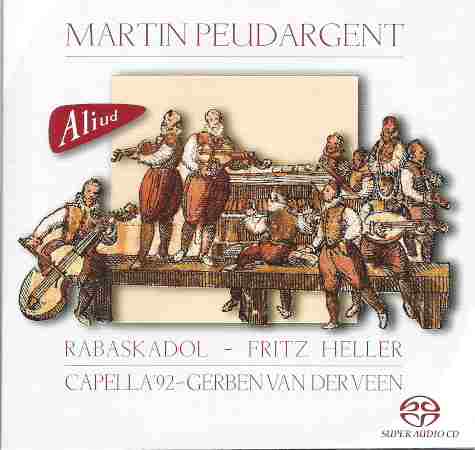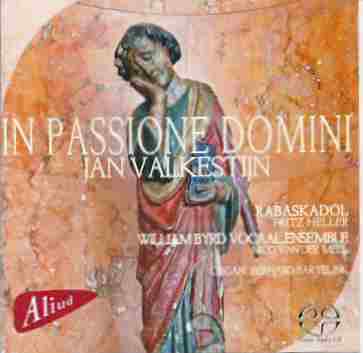Three Recordings by Rabaskadol led by Fritz Heller
Ensemble Website: www.rabaskadol.net
Publisher Website: www.aliudrecords.com


In Principio
Rabaskadol with Rostocker Mottenchor and Markus Johannes Langer
Aliud Records (ACD HA 010-2) recorded June and July 2006
Saskia van der Wel, soprano
Fritz Heller, straight and mute cornetto
Arno Paduch, curved and straight cornetto
Tim Dowling, Cas Gevers,Detlef Reimers, and Peter Sommer, trombone
Mechthild Alpers, bass shawm
Vincent Van Lazar, positive organ

Martin Peudargent
Rabaskadol with Capella ’92 and Gerben Van Der Veen
Aliud Records (ACD HN 016-2) recorded June 2006 and February 2007
Fritz Heller, straight, curved, and mute cornetto
Katherine Barml, alto shawm
Cas Gevers,Deflef Reimers, and Peter Stelzl: sackbut
Mechthild Alpers and Ursula Bruckdorfer: bass curtal;
Martin Lubenow, positive organ , spinet, curved and mute cornetto

In Passione Domini
Rabaskadol with William Byrd Vocal Ensemble and Nico Van Der Meel
Aliud records (ACD HJ 044-2) recorded October-December 2009
Saskia van der Wel, soprano and bass violin
Fritz Heller, cornetto and mute cornetto
Arwen Bouw, violin,tenor violin
Regine Haussler, Mechthild Alpers, and Jose Rodriguez Gomes: curtal
Bernard Bartelink, organ (Willibrodus organ)
Instrument Details: Fritz Heller: straight cornetto at A-440 after Berlin instrument A=632 and mute cornetto after S. Hier (Leipzig). Both instruments were make by Heller; curved cornetto by Siem van der Veen after Hambug Museum fur Kunstgesichte; all mouthpieces built by Heller.
Other cornetto players: instruments built by Roland Wilson and Paolo Franciulatti. Sackbutts: Cas Gevers: Geert Jan van der Heide after Hainlein, 1630, mouthpiece by van der Heide; Peter Stetzl: Meinl after Drewelwecz, 1595, mouthpiece by Peter Sommer; Tim Dowling: Meinl after Drewelwecz, 1595, mouthpiece by van der Heide; Detlev Reimers: Egger after Hainlein, 1630, mouthpiece by Thein, Bremen; Peter Sommer: bass sackbut “basso variable” by Sommer & Kempkes, mouthpiece by Peter Sommer.
The three recordings under consideration here are the fruit of Fritz Heller and his ensemble, Rabaskadol. Rabaskadol was founded in 1985 to perform wind music on period instruments and their repertoire spans medieval, renaissance, and early baroque eras. In addition to being its founder and leader, Fritz Heller plays various cornetti (straight, curved, and mute). He is also an accomplished instrument maker. Unfortunately, no information pertaining to the specific make of instruments used is provided in the otherwise extensive and informative liner notes, however the reviewer recieved detailed information from Heller which has been included above under "instrument details."
The music of “In Principio” comes from a collection of some 140 works gathered by a trumpeter of the court band of Graz, Niclas Rekh in 1585. The collection contains motets, madrigals and instrumental pieces which prescribe specific instrumentation: cornets (straight for German works, curved for Italian), shawms, and trombones. Some of the works on this recording have not been performed for 400 years. Composers represented are Orlando di Lasso, Andrea Gabrieli, and Giaches de Wert.
The second CD considered here features the music of Martin Peudargent (ca. 1510-before 1594), who composed for the Court of Duke Wilhelm V of Jullich-Keve-Berg. The majority of music on this recording is from the second of his three books (1555).
In Passione Domini is a collection of Passion motets by Johannes Flamingus (d 1598?), Orlando di Lasso, Alexander Utendal (ca. 1535-1581), Michel DuBuisson (fl. 1560-73) and Jan Vakestijn (b. 1928). While the 16th century music will likely be of more interest to our HBS members, Vakestijn’s music is interesting in that the composer has scored it for cornetto, strings and curtal. Rabaskadol performs it wonderfully, giving great care to phrasing and blend. The result is an attractive blend of 16th century timbres and 20th century harmonies.
The quality of these three recordings is impressive. I was moved by their richness and grandeur as well as their especially fine blend and sensitive phrasing. Some tracks are purely instrumental performances of vocal music. Care is taken in articulation to “sing” the underlay. I also admire Heller’s sensitive playing with soprano Sakia van der Wel (whose warm expressive voice is itself inspiring) on Peudargent’s “En Foecunda Aquila.” Indeed, so well matched are they that it is easy to mistake cornetto with voice in the interweaving and imitative lines. This quality can be heard throughout. In total, this group of Fritz Heller’s recordings deserves our members’ highest attention.
--James Miller



